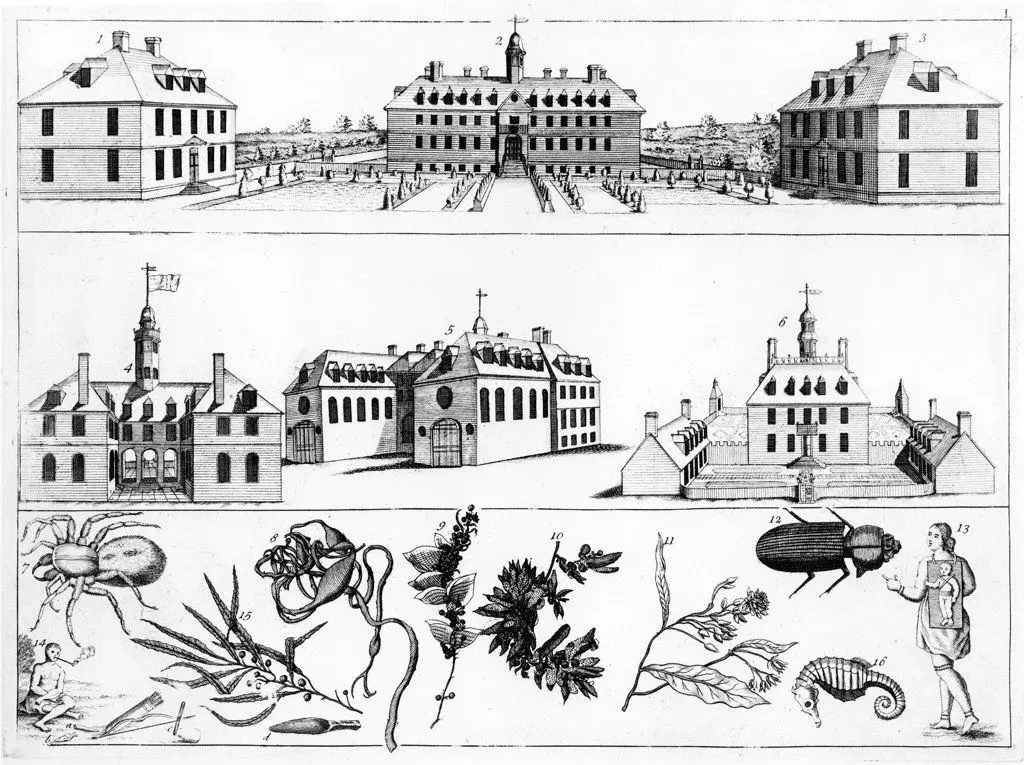When Did Williamsburg Became The Capital Of Virginia?
Williamsburg was one of the most important colonial towns in early America. Founded in 1632, it was located along the Virginia Peninsula between the York and James Rivers. Over the next century, Williamsburg grew into a prosperous settlement and hub of politics and culture in colonial Virginia.
In 1699, Williamsburg was designated as the new capital of the Virginia colony, replacing Jamestown which had been ravaged by fires and disease. Williamsburg was selected due to its central location and access to the rivers. As capital, Williamsburg became the political, cultural, and educational center of Virginia in the 18th century. The town expanded rapidly with the construction of the Capitol building, Governor’s Palace, and College of William & Mary. Williamsburg served as the capital of Virginia for 81 years until 1780, when it was moved to Richmond shortly before the American Revolution.
During its time as capital, Williamsburg played a pivotal role in colonial America and the events leading up to the Revolutionary War. As we’ll explore, Williamsburg was the setting for many key political events and helped shape the ideals that led to American independence.
Founding of Williamsburg
Williamsburg was founded in 1632 as Middle Plantation, located midway between the James and York rivers. It was established by the Virginia Company as a fortified settlement. The location was selected due to its good soil, abundant forests, and central location between Jamestown and Yorktown. Middle Plantation began with a palisade of approximately 1,300 feet, enclosing homes, a storehouse, and a church.
By 1634, Middle Plantation was home to around 120 people. The small village continued growing steadily through the mid-1600s. It was incorporated as a town in 1698 and referred to as Williamsburg after King William III. Williamsburg was soon designated as the new capital of the Virginia Colony in 1699, replacing Jamestown which had served as the capital since 1607.
Williamsburg was selected as the capital due to its central location within the Tidewater region, an area comprising coastal plains and major rivers. The town continued growing and by 1722, when Williamsburg was granted a royal charter, it had a population of close to 1,500 residents. Streets were laid out in a grid pattern and new government buildings were erected, giving Williamsburg the structure of a proper colonial capital. Its central location helped facilitate trade and commerce. With the capital designation, Williamsburg transitioned from a small village into a center of political, cultural, and economic activity within the Virginia Colony.
Pre-Revolutionary Williamsburg
Williamsburg served as the political hub of Virginia in the decades leading up to the American Revolution. As the colonial capital since 1699, Williamsburg was the center of political debate and activism against British rule in the 1760s and 1770s. The House of Burgesses frequently clashed with Royal Governors as they asserted the rights of colonists and passed resolutions against British taxes and trade restrictions.
Some key events that occurred in Williamsburg on the road to Revolution included:
- In May 1765, Patrick Henry presented the Virginia Resolves against the Stamp Act in the House of Burgesses, marking one of the first organized protests against British taxation.
- On May 30, 1774, the House of Burgesses was dissolved by Royal Governor Lord Dunmore after passing a resolution declaring June 1 as a day of “fasting, humiliation, and prayer” in sympathy with Boston after the Boston Port Act.
- In response, the dissolved House of Burgesses reconvened at the Raleigh Tavern and called for a colonial congress – leading to the First Continental Congress that met in September 1774.
- In 1775, Patrick Henry delivered his famous “Give me liberty or give me death” speech at St. John’s Church, rallying support for the Patriot cause.
As these episodes show, Williamsburg and its political leaders were at the forefront of Colonial resistance against perceived British tyranny, eventually leading the drive toward American independence. (The History of Williamsburg – www.battlefields.org)
Williamsburg Named the Capital
In 1699, Williamsburg was named the capital of Virginia, replacing the former capital of Jamestown. This came about due to the urging of Francis Nicholson, who was the lieutenant governor of Virginia at the time. Nicholson had just moved to Middle Plantation, which was later renamed Williamsburg, and pushed for the capital to be relocated there from Jamestown. There were several key reasons why Williamsburg was deemed a better site for the capital than Jamestown (History | Williamsburg, VA):

First, the location at Middle Plantation was more central and accessible for representatives traveling from across Virginia to meet at the capital. Jamestown was located on the James River at the far southeastern point of Virginia, making travel difficult for many. In contrast, Middle Plantation was situated on high ground and at the convergence of several roads.
Second, the water supply was cleaner and less brackish at Middle Plantation compared to Jamestown, which was marshy and had contaminated drinking water. This led to more disease and health issues in Jamestown.
Third, Middle Plantation provided ample room to design and build a grand new Capitol building to house the government. Jamestown had limited space and the statehouse built there kept burning down due to accidents and fires.
With these advantages over Jamestown, the legislature agreed to Nicholson’s proposal and Middle Plantation was selected to become the new capital in 1699. The city was soon renamed Williamsburg in honor of King William III of England.
Colonial heyday
Williamsburg served as the capital of the Virginia colony during its heyday in the 18th century. After being surveyed and laid out by Governor Francis Nicholson starting in 1699, Williamsburg was selected to be the new capital in 1699, replacing Jamestown which had been ravaged by fires and disease (Colonial Williamsburg Capitol). The new Capitol building was constructed between 1701-1705 to house the General Assembly and the House of Burgesses (Capitol (Williamsburg, Virginia)).
During the 1700s, Williamsburg grew into a thriving colonial capital and the center of political power in Virginia. The Capitol building was the site of important political debates and decisions as the colony expanded. Some major events that occurred while Williamsburg was the colonial capital included the onset of the French and Indian War in 1754, with Virginia militiamen playing a key role early in the war. The 1750s and 60s also saw growing social and political unrest, as revolutionary sentiments began stirring among the colonists. In 1765, Patrick Henry presented his “Caesar-Brutus” speech at the Capitol denouncing King George III and British taxes. And in 1769, residents protested the Townshend Acts by hanging an effigy of the British Prime Minister at the Capitol (The Colonial Capitol).
Approaching Revolution
Williamsburg served as the capital of Virginia’s royal colony during a tumultuous time leading up to the American Revolution. As resentment grew towards British colonial policies, Williamsburg became a hotbed of revolutionary sentiment.
In 1765, Virginia’s House of Burgesses passed the Virginia Resolves at the Capitol building in Williamsburg, denouncing the Stamp Act imposed by the British Parliament. This was one of the first organized responses against British taxation and helped galvanize opposition throughout the colonies. Patrick Henry delivered his famous “Give me Liberty or Give me Death” speech at St. John’s Church in Williamsburg just before the outbreak of the Revolutionary War, further demonstrating the rebellious mood brewing in the capital.
As cited from The History of Williamsburg, “Williamsburg featured prominently in the Virginia colony’s road to revolution.” The article notes that rising tensions frequently spilled out onto the streets of Williamsburg in the pre-Revolutionary period.
Capital During the Revolution
As tensions rose between the American colonies and Britain in the 1770s, Williamsburg played a pivotal role. As the capital of Virginia, Williamsburg was the center of revolutionary sentiment in the colony. In 1774, Virginia’s royal governor, Lord Dunmore, dissolved the House of Burgesses after they declared solidarity with Massachusetts following the Boston Tea Party. The Burgesses reconvened at the Raleigh Tavern and called for a colonial congress (History of Williamsburg).
With the outbreak of fighting at Lexington and Concord in 1775, Dunmore fled Williamsburg along with his family. The government functions of Williamsburg continued under the leadership of the House of Burgesses and later the Virginia Convention. In 1776, Virginia declared its independence at the convention in Williamsburg several weeks before the Continental Congress passed the Declaration of Independence. Williamsburg was central to recruiting soldiers and supplying the Continental Army during the war. The capital relocated to Richmond in 1780 for security reasons as the British threatened to invade (Revolutionary City).
Losing the Capital
After the American Revolution ended in 1783, there was debate about whether Williamsburg should remain the capital of Virginia. Some felt a new capital would be more appropriate for the new nation. In 1779, the capital was temporarily moved to Richmond for security reasons during the war. After the war, in 1780, Richmond officially replaced Williamsburg as Virginia’s capital.
With the loss of political prominence, Williamsburg declined in importance. The city lost business as fewer politicians and visitors traveled there. The College of William & Mary also struggled, as enrollment dropped off. Some historic buildings fell into disrepair or were modified for other uses over time.
Williamsburg Since the 18th Century
After Williamsburg lost its status as the capital of Virginia in 1779, the city went into a period of decline. Many businesses and residents left as the political power shifted to Richmond. Williamsburg reverted back to being a small college town centered around William & Mary.
In the early 20th century, the Rockefeller family funded restoration efforts to preserve Williamsburg’s colonial history. This led to the creation of Colonial Williamsburg, which turned the historic area into a living museum. Costumed interpreters reenact life in the 18th century. The restoration helped drive tourism and boost Williamsburg’s economy.
Today, Williamsburg is a popular tourist destination and retains its colonial charm. The College of William & Mary continues to be an anchor for the community. While no longer the bustling capital it once was, Williamsburg embraces its past and shares its rich history with over 1 million visitors each year.
Conclusion
Williamsburg served as the capital of Virginia for 80 years, from 1699 to 1779, encompassing the colony’s formative period and rise to prominence in America. As the seat of colonial government, Williamsburg was at the center of pivotal events leading up to the Revolutionary War.
During its time as capital, Williamsburg grew into a hub of politics, culture, education and innovation. The city hosted Virginia’s House of Burgesses and the Governor’s Palace, where influential leaders like George Washington, Thomas Jefferson and Patrick Henry debated ideas of liberty and democracy. Landmark institutions like the College of William & Mary drove intellectual development.
Williamsburg’s legacy as a colonial capital remains integral to America’s origin story. The city’s restored historic area provides a window into 18th century life. As a living history museum, Colonial Williamsburg educates millions on early American ideals that shaped the nation. The capital’s lasting impact and rich historical assets continue to make Williamsburg an important destination.
Though Williamsburg lost its status as Virginia’s capital after the Revolution, its brief but formative role at the center of colonial America secures its place in history.

